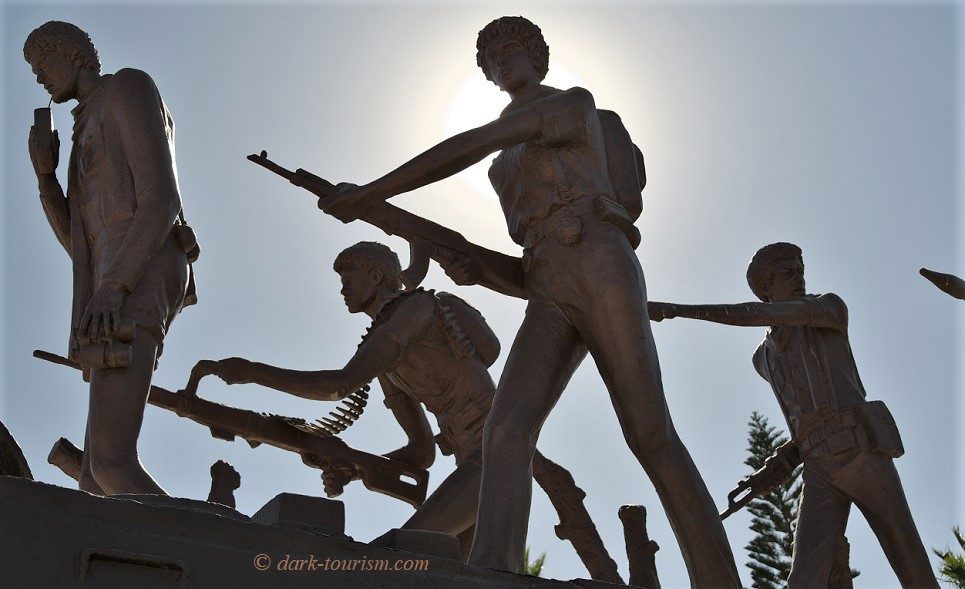| |
|
| ||
|
| |
9/11 and War & Peace This week has been much less turbulent than the previous week, at least for me personally. On the world stage, however, it’s a different matter in various places. But first a look at what happened on the DT Blog. In Monday’s post I quipped that it was “9/11”, if only in the European custom of writing out dates, so 9th of November. That’s a pretty historic date: in 1923 Hitler’s first attempt to seize power was crushed in Munich (but only a bit over nine years later he was successful even at the national level), in 1938 Nazi mobs destroyed hundreds of synagogues and terrorized Jews all over the “Reich” in the so-called Night of Broken Glass (‘Kristallnacht’ in German). And in 1989 the Berlin Wall “came down”, not quite literally yet, but the border crossing checkpoints between East and West Berlin were opened, triggering a storm of events that shortly after led to the physical dismantling of the border fortifications. Only a few remnants of the Berlin Wall and the border fortifications between the GDR and the FRG survive to this day to serve as memorials. The blog post on Monday featured photos of a few such sites. The second post of the week came on Wednesday and was about two regions in the world shaken by violence. Firstly there's Nagorno-Karabakh with the long-simmering conflict over this breakaway republic located within Azerbaijan but with an ethnic Armenian population. This self-declared independent “state” has had vital support from Armenia since the very beginning. The conflict had flared up before, but in September this year it escalated into proper war again, with the shelling of cities and trench warfare – as reported on the DT blog back on 1 October. Since then things have developed significantly. Apparently with support from Turkey, Azerbaijani troops managed to retake the second city of the region, Shushi, or ‘Şuşa’ in Azeri, some territory to the south and east as well as the “buffer zone” formerly controlled by Armenia. A peace deal brokered by Russia was then signed by the Armenian prime minister, in which these territorial losses to the Azerbaijani side were cemented. The prime minister said it was a painful concession to make but necessary in order to end the fighting. Many Armenians then took to the streets and stormed government buildings and the parliament calling the peace deal “betrayal”. Whether it has much chance of bringing lasting peace under the circumstances remains to be seen. I’ve not heard anything new about Nagorno-Karabakh since Wednesday, but will try to follow the situation. The same goes for Ethiopia, which seemed to be on the brink of all-out civil war by Wednesday, if not already beyond that brink. Here the conflict is between the federal state, with its capital Addis Ababa, and the northern province of Tigray. Its leadership under the Tigrayan People’s Liberation Front party, the TPLF, fell out with the government claiming that is was being marginalized and several leading TPLF members were imprisoned. Now the country’s prime minister has declared he wants to stamp out the TPLF, while the latter proclaim they’re ready to become martyrs … again. That term was already used for those who fell in the long civil war that ended the previous Derg regime in 1991. Very little information is emerging from the region, though, which has been cut off from all communications and supplies. But there were reports of streams of thousands of refugees entering neighbouring Sudan, and yesterday there were rumours of atrocities and war crimes. But it’s very difficult to be sure about anything at the moment. It certainly looks like the situation has worsened dramatically since Wednesday. I find that particularly tragic also because Ethiopia was actually the last country I visited before the outbreak of the current pandemic. And that trip included Mekele, the capital of Tigray, which reportedly came under attack from the government air force. And the latest I read just now is that apparently there have been rocket attacks on the airport of Asmara, the capital of neighbouring Eritrea, allegedly because Ethiopia is using that airport to launch aerial attacks on Tigray, so the TPLF claims it's a legitimate target. So now there are rising fears that this conflict is already spilling over Ethiopia's borders ... It would clearly be impossible – or certainly not advisable – to travel to either Nagorno-Karabakh or Ethiopia, especially Tigray, at the moment even without the pandemic. As a kind of reminiscence I included some photos in the blog post that I had taken in these regions when I visited them, in much calmer times, namely images from Shushi/Şuşa, Mekele and other places in Ethiopia that showed the omnipresence of firearms in that country. That’s also a great worry, especially with regard to Tigray – which is heavily armed, has plenty of ammunition supplies and also lots of training and battle experience from the previous conflict with neighbouring Eritrea. So this civil war could prove to be especially bloody. In Mekele I saw the grand Tigrayan Martyrs Monument with its martial statuary – which suddenly takes on a whole new symbolism. Hence I picked the relevant photo I took of the monument, with those heavily armed soldiers marching into battle, to serve as the lead photo for this newsletter. So, not the best of developments, but let’s hope it’s not getting so much worse. Have a good week – as far as that is possible under the circumstances. We've just learned yesterday that Austria is about to go back into a full lockdown ... i.e. the curfew will be extended to daytime and we will only be allowed out for essentials like food shopping or getting meds from the pharmacy. Oh well. At least we still live in peace, so these restrictions are mere "First World problems", as the saying goes. Peter |
|
| |
|
| |||
|
